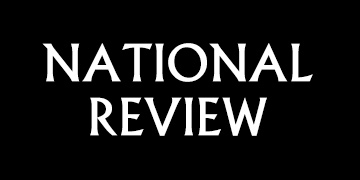Newsletter July 25, 2024
What Does Kamala Harris’ Candidacy Mean for the Gender Gap in 2024?

Barring another unprecedented shake up, Vice President Kamala Harris will be the Democratic nominee for president. She would become the second woman from a major political party to be nominated. Vice President Harris’ dramatic ascent scrambles the 2024 race in any number of ways, but it may reinforce the political divide between men and women.
The last time a woman appeared at the top of the ticket, there was a double-digit divide in the voting preferences of men and women. Pew’s study of validated voters revealed a 13-point gender gap in voting preferences in 2016. Fifty-four percent of women voted for Clinton compared to only 41 percent of men. The gender gap shrunk considerably in the following presidential election when Biden replaced Clinton as the Democratic nominee—women supported Biden over men by only a modest margin.
It’s certainly conceivable that the gender gap could reemerge this year.
The 2024 Republican National Convention was orchestrated to showcase masculine strength and vigor—exemplified by Hulk Hogan’s signature shirt ripping and a speech from UFC president Dana White. The New York Times described the tone of the convention as an unapologetic celebration of masculine energy:
“The [RNC] lineup suggests a swing back to the bellicose political style that defined Trump’s rise. And as calls for men to embrace more traditional ideals of manliness have percolated in conservative circles in the wake of the #MeToo movement, it is an explicit embrace of masculinity as Republicans move to burnish Trump’s own image of physical strength.”
Trump’s selection of JD Vance as his running mate could be seen as doubling-down on this appeal to certain type of male voter.
In an interview with Tucker Carlson, Vance bemoaned the rising political and cultural influence of unmarried and childless women. He said, “We’re effectively run in this country via the Democrats…a bunch of childless cat ladies who are miserable at their own lives and the choices that they made, and so they want to make the rest of the country miserable too.”
If Republicans are going to great lengths to appeal to manly men, the Democrats are looking to galvanize women around the issue of abortion. Harris has been a longstanding “defender of abortion rights.” Earlier this year she embarked on a “Reproductive Freedoms Tour” across several swing states. Democratic strategists generally view Harris as a more effective messenger on the issue than Biden, especially in reaching young women and women of color. But young men are far less focused on the issue, and many young men believe abortion has nothing to do with them.
A Sign of Things to Come?
It’s very early, but there is some evidence that men and women have already adopted very different views of the presumptive Democratic nominee. A recent Quinnipiac poll found that women are divided in their views of Harris—as many view her favorably as unfavorably—but men have an overwhelmingly negative impression of her. Nearly six in ten men have an unfavorable view of Harris, twice as many as view her positively. A newly released CNN/SSRS poll showed much the same thing—a dramatic gender divide.

But none of this is set in stone. Plenty of voters don’t know much about Harris. What’s more, even well-established figures—such as 78-year-old former presidents—can see their public image undergo a dramatic reinvention. I had considered the gender gap in views of Trump to be an immutable reflection of his leadership style, record, and personal background. But maybe not. In our most recent survey, the gender gap in views of Trump disappeared—something I would not have thought possible.
The campaign and August’s Democratic National Convention will offer opportunities for Harris to reintroduce herself to the public, address her critics, and shore up support. How she frames her record, her choice of running mate, and the issues she highlights will go a long way to determining how men and women view her.
More than anything else, gender will matter to voters to the extent that they are reminded to consider it when evaluating the candidates. From the outset, the 2016 Clinton campaign leaned into the historic nature of her candidacy. Her campaign slogan, “I’m with her,” welcomed voters to join her on this journey. Despite an emphasis on breaking glass ceilings, Clinton did not fare much better with women than past Democratic candidates. What did happen was that white men abandoned the Democrats to support Trump and, in the process, created the largest gender gap in roughly 50 years.
Plenty of reporters and activists will play up the historic nature of Harris’ candidacy as the first woman of color nominated by a major party. It also seems inevitable that some of her critics will engage in personal attacks that play on sexist or racial stereotypes, such as the claim she is a “DEI candidate.” However, at this stage, gender may be a less salient consideration for voters than it was in 2016. More than anything else, what promises to make the gender dynamics different this year is simply that they are not new. Voters have seen a woman at the top of the ticket before. Sixty-five million Americans have already voted for a woman to be president of the United States.
This is not to say that gender won’t matter this year. In any number of ways it will, but perhaps it will matter less. A recent Pew poll found that compared to even a few years ago, fewer women today believe they face significant obstacles in seeking higher office. I find reason for hope in that. But progress is measured not by our capacity to ignore the influence gender has on our politics, but by recognizing the ways it still matters, and, increasingly, the ways it does not.
Read more on American Storylines








